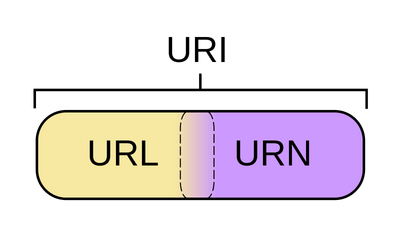In computing, a uniform resource identifier (URI) is a string of characters used to identify a name or a web resource. Such identification enables interaction with representations of the web resource over a network using specific protocols. Schemes specifying a concrete syntax and associated protocols define each URI. In the Semantic Web anything that can be identified with a Uniform Resource Identifier (URI) can be described and machine can reason about it.
What is the difference between URI and URL?
A URI can be further classified as a locator, a name, or both. The term “Uniform Resource Locator” (URL) refers to the subset of URIs that, in addition to identifying a resource, provide a means of locating the resource by describing its primary access mechanism (e.g., its network “location”). The term “Uniform Resource Name” (URN) has been used historically to refer to both URIs under the “urn” scheme [RFC2141], which are required to remain globally unique and persistent even when the resource ceases to exist or becomes unavailable, and to any other URI with the properties of a name.
What is a URN then?
Uniform Resource Name (URN) is the historical name for a Uniform Resource Identifier (URI) that uses the urn scheme.
